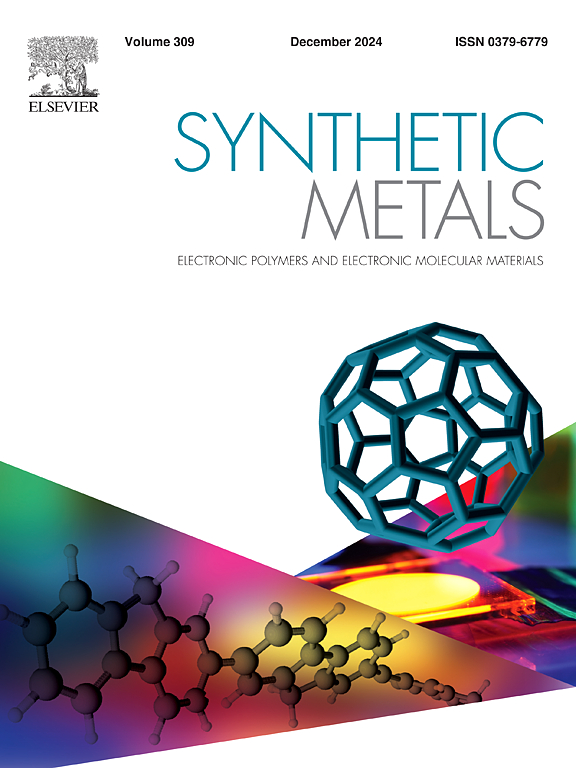Potentiostatic synthesis of polyaniline zinc and iron oxide composites for energy storage applications
IF 4
3区 材料科学
Q2 MATERIALS SCIENCE, MULTIDISCIPLINARY
引用次数: 0
Abstract
This study introduces an efficient potentiostatic method to enhance the energy storage performance of polyaniline (PN) by synthesizing PN@ZnO (PNZ), PN@Fe2O3 (PNF), and PN@ZnFe2O4 (PNZF) hybrid electrodes with defined porous morphology. The precise selection and control of the working potential during electro-polymerization and metal oxide integration using the linear sweep voltammetry was key for synthesizing the polymer hybrid electrodes reproducible and with defined composition and structure. The PNZF electrode demonstrated the highest specific capacitances of 816 F g−1 and 791.3 F g−1 at a scan rate of 5 mV s−1 and 1.0 A g−1 current density, along with high power density and energy density of 1058.4 W kg−1 and 136.4 Wh kg−1, and with excellent stability retaining 90 % over 4000 cycles. We could attribute the excellent performance to a low charge transfer resistance of 25.0 Ω, a predominantly surface-controlled charge storage mechanism, and a porous morphology with uniform distribution of ZnFe2O4 particles in the polymer network, all resulting from the electrochemical synthesis method. Our study provides valuable and new insights into the structural, optical, and electrochemical properties of PN composites, particularly PNZF.
用于储能应用的聚苯胺锌和氧化铁复合材料的恒电位合成
本研究介绍了一种高效的恒电位方法,通过合成具有确定多孔形态的 PN@ZnO(PNZ)、PN@Fe2O3(PNF)和 PN@ZnFe2O4(PNZF)混合电极来提高聚苯胺(PN)的储能性能。在电聚合和金属氧化物集成过程中,使用线性扫描伏安法精确选择和控制工作电位是合成具有可重复性、确定成分和结构的聚合物杂化电极的关键。在扫描速率为 5 mV s-1 和电流密度为 1.0 A g-1 的条件下,PNZF 电极的比电容最高,分别为 816 F g-1 和 791.3 F g-1,功率密度和能量密度也很高,分别为 1058.4 W kg-1 和 136.4 Wh kg-1,并且在 4000 次循环中保持了 90% 的稳定性。我们可以把这种优异性能归功于 25.0 Ω 的低电荷转移电阻、主要由表面控制的电荷存储机制以及 ZnFe2O4 颗粒在聚合物网络中均匀分布的多孔形态,所有这些都是电化学合成方法的结果。我们的研究为 PN 复合材料(尤其是 PNZF)的结构、光学和电化学特性提供了宝贵的新见解。
本文章由计算机程序翻译,如有差异,请以英文原文为准。
求助全文
约1分钟内获得全文
求助全文
来源期刊

Synthetic Metals
工程技术-材料科学:综合
CiteScore
8.30
自引率
4.50%
发文量
189
审稿时长
33 days
期刊介绍:
This journal is an international medium for the rapid publication of original research papers, short communications and subject reviews dealing with research on and applications of electronic polymers and electronic molecular materials including novel carbon architectures. These functional materials have the properties of metals, semiconductors or magnets and are distinguishable from elemental and alloy/binary metals, semiconductors and magnets.
 求助内容:
求助内容: 应助结果提醒方式:
应助结果提醒方式:


